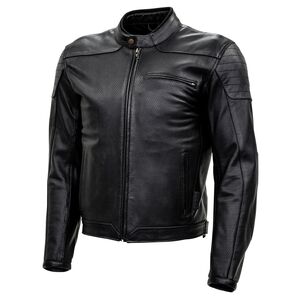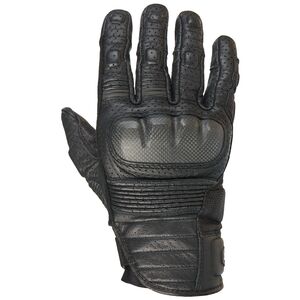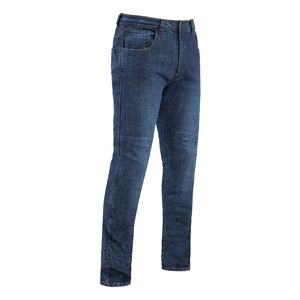The first motorcycle I ever fell in love with was a 1991 Harley-Davidson Fat Boy.
If you’ve ever seen “Terminator 2: Judgment Day,” you know why.
The James Cameron blockbuster was big on bikes. It featured the likes of Kawasaki’s KZ1000P and Honda’s XR100R, but none of them were ridden by Arnold Schwarzenegger. That distinction belonged to the Fat Boy, and the Fat Boy alone.
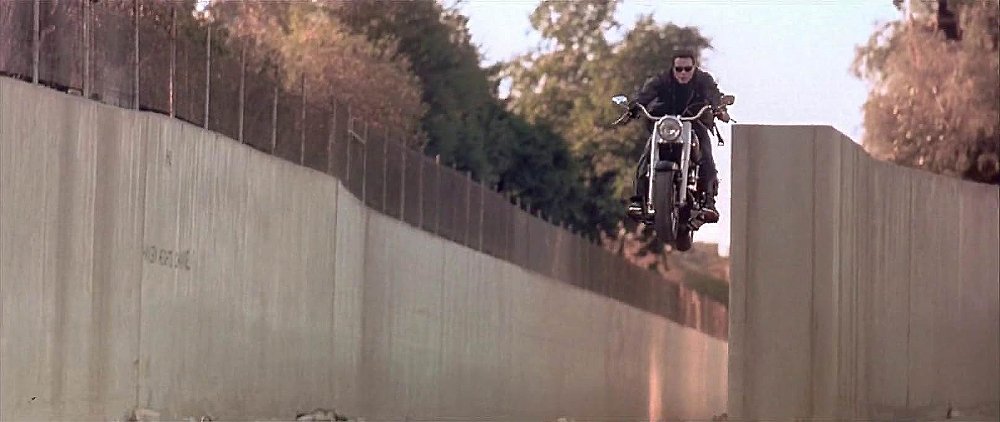
It was the early 1990s, and Arnie could do no wrong. The bodybuilder turned actor was the world’s biggest action star. Dress him in all black and drop him into the saddle of a Hog (in Vivid Black, no less), and you have one of the most legendary pairings in cinematic history. A pairing that put the Fat Boy on posters, billboards, and magazines. It was an iconic moment for the Motor Company.
That’s why I was left scratching my head when Harley introduced the 2025 Fat Boy Gray Ghost as the latest entry in its Icons Collection. “That’s not the Terminator Bike,” I groaned. The “real” icon was clear to me. It was the bike of my childhood hero. It was the first bike I fell in love with. It wasn’t some snoozer of a cruiser with a bland paint job.
To me, the original Gray Ghost resembled one of Harley’s second-year paint schemes, a conservative option amongst more colorful choices like Tahitian Teal or Industrial Yellow. Unlike the Icon Collection models before it, the Gray Ghost wasn’t wholly indicative of its era, either. It didn’t have the period-correct appearance of the Hydra Glide Revival or Low Rider El Diablo. It looked more like a product of the ‘50s, not the ‘90s. So, just how did the Gray Ghost attain icon status in the Bar and Shield’s book? We have to go back to the model’s inception to find out.
Outshining an icon
Before its big turn on the big screen, before the Fat Boy ever rolled into showrooms, there was the Lowboy. Created in 1984 by Harley-Davidson Montréal, the Softail-based custom lived up to its nickname with a slammed rear suspension and aluminum disc wheel. The build eventually caught the eye of H-D exec Jerry Wilke, who sent an example back to the brand’s Milwaukee headquarters.
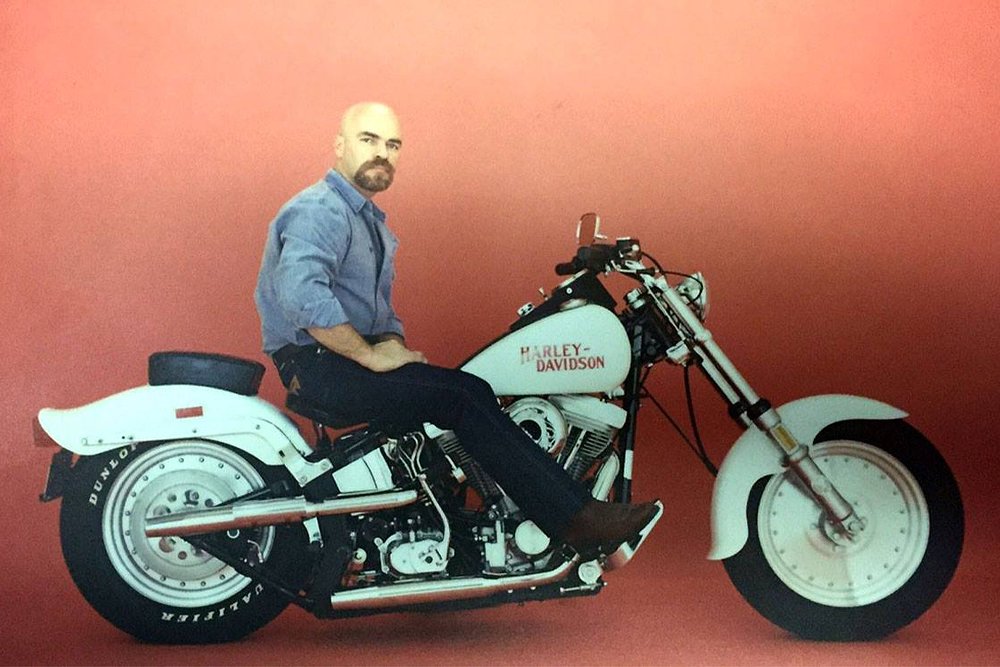
Led by Willie G. Davidson and Louie Netz, Harley’s styling team drew on the Lowboy to create what we know today as the Fat Boy. When describing the design process behind the maiden model, Davidson acknowledged that its solid-cast wheels didn’t just create “a distinctive look,” they were also its “defining characteristic.” The rest of the bike was an aesthetic extension of those wheels, with “a silver monochromatic paint job and silver powder-coated frame” pushing that “distinctive look” even further. The end result was the Gray Ghost.
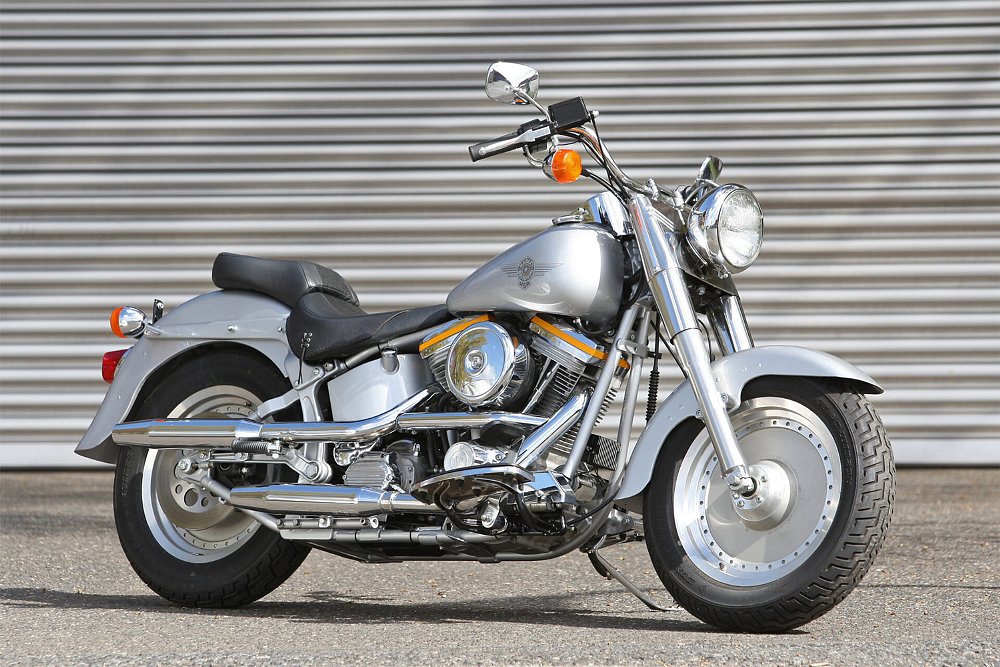
Thirty-five years later, the Gray Ghost returns, but this time around, it’s more polished than ever. The silver frame and disc wheels remain. The silver fenders and tank don’t. Instead, this Gray Ghost touts tins with a mirror finish, a feat Harley accomplished with physical vapor deposition (PVD). The treatment clearly distinguishes this rendition of the Gray Ghost from its predecessor. The differences go beyond the surface, too.
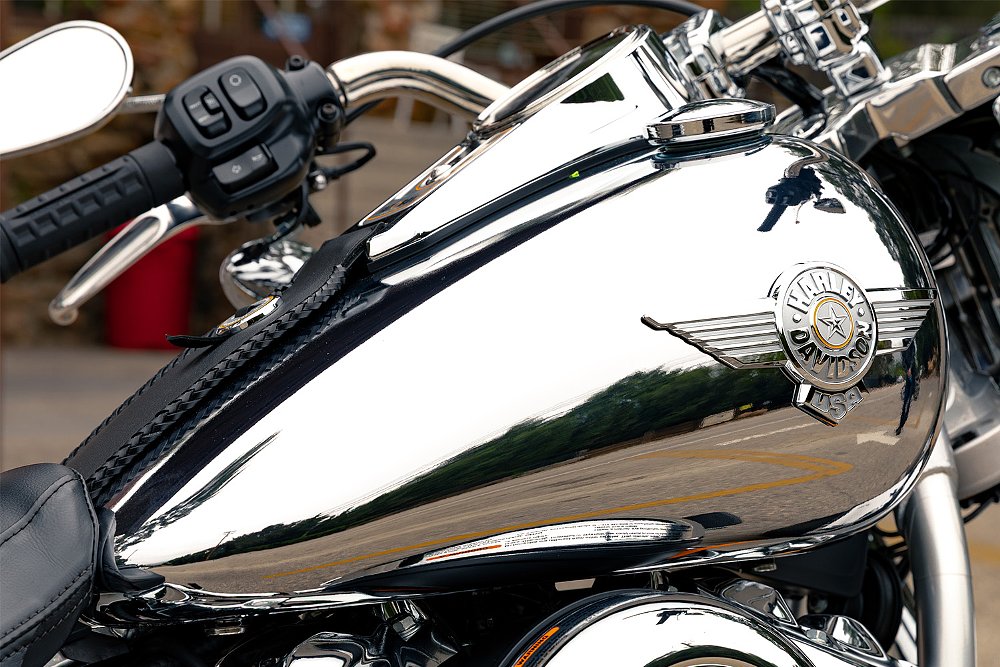
As the years passed, the Fat Boy only grew fatter. It went from Harley’s 80 ci Evolution Big Twin in the ‘90s to Twin-Cam engines of increasing volumes (88 ci, 103 ci, and 110 ci) in the 2000s. When the Softail line transitioned to a monoshock chassis in 2018, the Fat Boy showed up with Harley’s 107 ci and 114 ci Milwaukee-Eight. It now harnesses the 117 ci version of the V-twin powerplant.
Displacement creep isn’t the only change the Fat Boy underwent over the last three decades. The Lowboy made waves with matching front and rear tires. That explains why the original Fat Boy rolled on two 130-section hoops. Those donuts are dwarfed by the ones found on today’s model. The front tire now measures 160 mm in width while the rear balloons to a 240-section. As Willie G. said, the Fat Boy’s wheels are its “defining characteristic.” It’s a characteristic that also defines the Fat Boy’s riding experience.
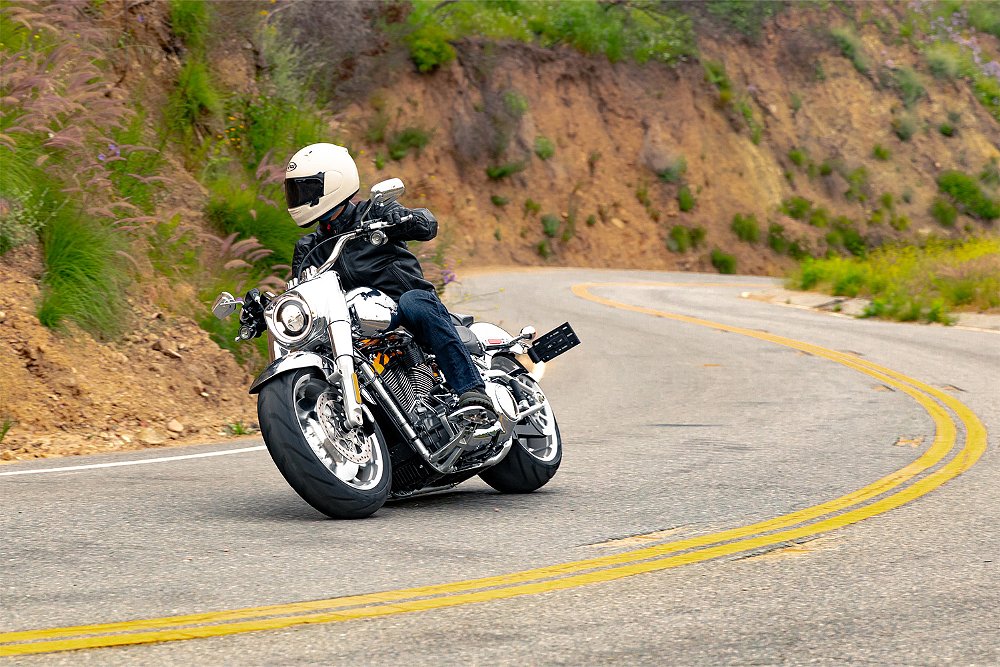
Exceeding expectations
With much of the Fat Boy, what you see is what you get. It looks heavy, and it is, tipping the RevZilla West scales at 686 pounds. It looks comfortable, and it is, with the handlebar swooping back and the floorboards stretching slightly forward. It looks muscular, and it is, with more torque on tap than a Nissan Versa. But looks alone don’t tell the full story. After logging 500 miles aboard the Softail, after guiding it through the coastal canyons of Malibu and the concrete canyons of downtown Los Angeles, I learned the Fat Boy isn’t devoid of all surprises.
The centerpiece of any American-made cruiser is its V-twin engine. The Gray Ghost is no exception to the rule. At its core thrums a 1,923 cc Milwaukee-Eight, which lays down a claimed 101 horsepower (at 4,800 rpm) and 122 foot-pounds of torque (at 3,000 rpm). As those figures suggest, the Fat Boy values low-down pull over top-end power. It should be ridden as such. I have a proclivity for revving out engines. That’s not the case here.
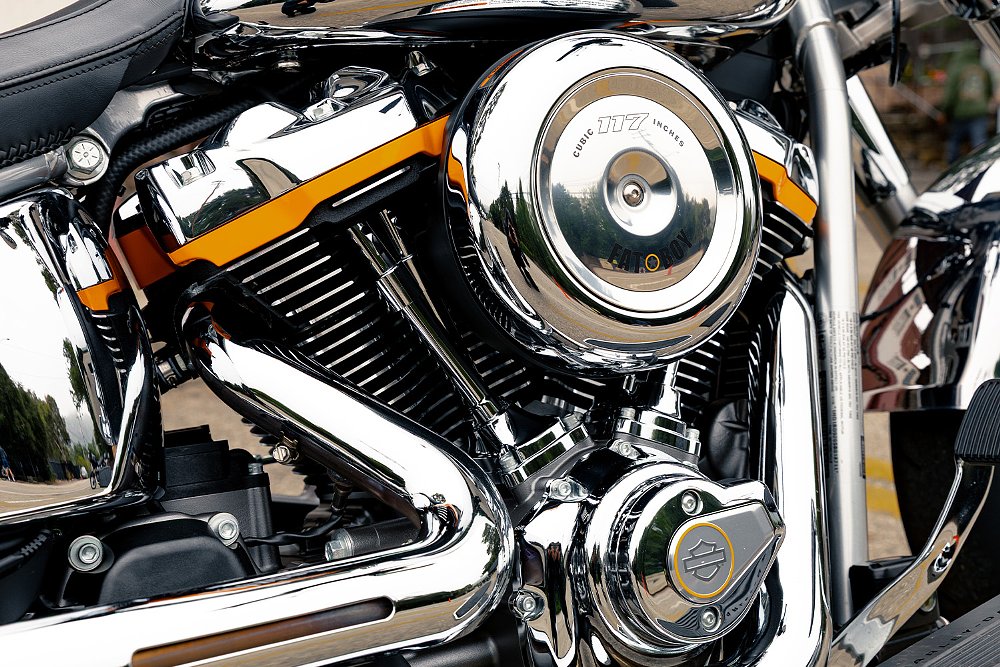
If you want to let this Fat Boy eat, it’s best to ride its torque curve. That’s why I often grabbed a gear just after 3,000 rpm. Of course, that’s where torque peaks, but that alone didn’t dictate my gear changes. Engine vibrations did, too. Buzzing through the grips was strongest at 3,250, which influenced most upshifts. If you push past the 4,000 rpm mark, vibrations aren't just mitigated, they also migrate from the bar to the tank and foot controls. But, the juice was hardly worth the squeeze, especially with bottom-end torque providing much of the thrills here.
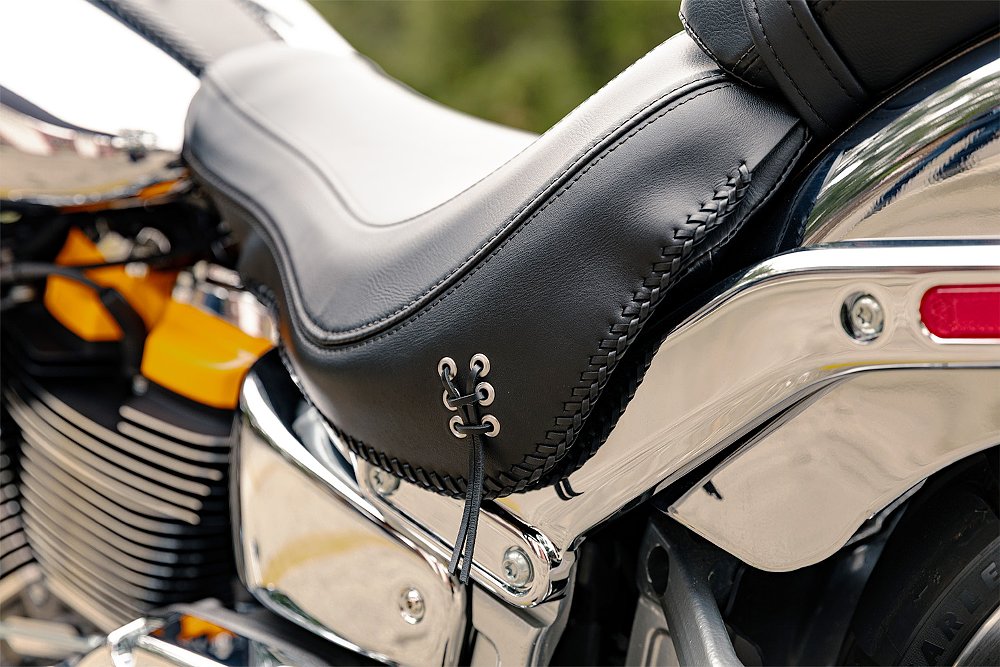
That’s saying something for someone like me. Someone who lives just south of the redline. Yet, riding the Gray Ghost was a welcome change of pace, in more ways than one. The Fat Boy thrives between idle and 3,000 rpm. Most modern motorcycles can barely operate in that territory without sputtering and lugging back into the midrange. That’s in sharp contrast to the Gray Ghost’s connected throttle response throughout the rev range. Ask and you shall receive (now, not later).
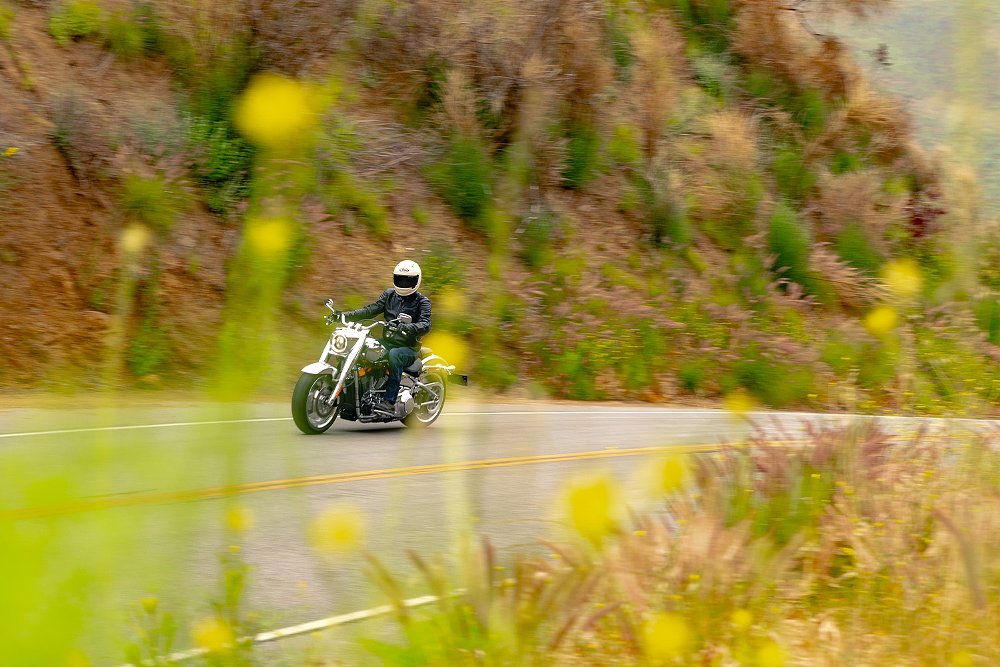
The three ride modes may alter the immediacy of that delivery, but they don’t sacrifice the connected quality. There’s also a tangible difference between the Sport, Road, and Rain modes, with each satisfying its advertised application. Ride modes are just the tip of the technology iceberg, too.
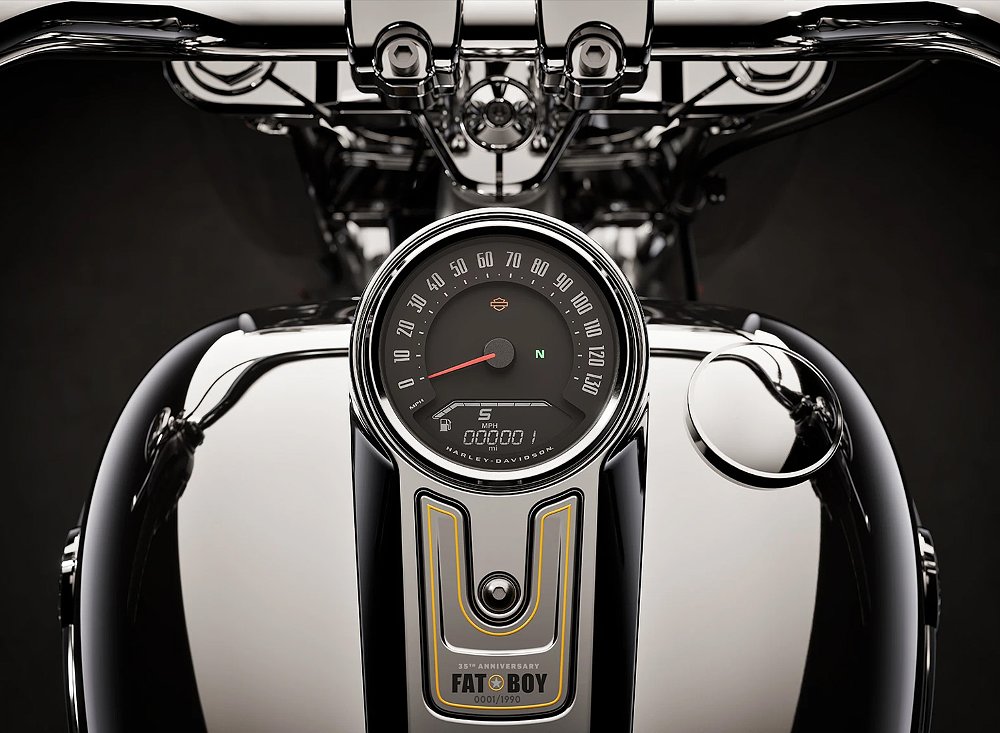
For the first time in the Softail lineup, all models now come with advanced rider aids. That includes ABS, traction control, and drag-torque slip control, all with cornering functions. The extra features don’t encumber the ride, though. There’s no multi-level this or eight-setting that. You either leave TC on or turn it off. Simple as that. To my knowledge, I only tripped traction control once. Still, it’s comforting to know that such aids are active, especially when wrestling nearly 700 pounds of American iron into a hairpin. Which brings me to my next point: handling.
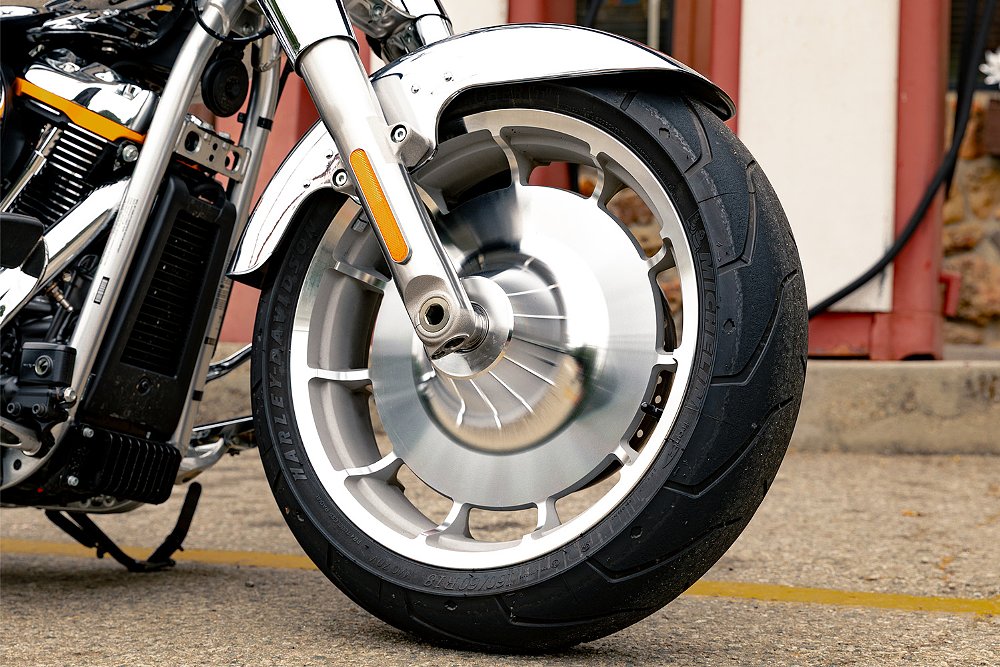
People are quick to warn you about the steering capabilities of a 240-section rear tire. For the most part, they’re right. The Fat Boy doesn’t rail through turns; it simply manages them. Say goodbye to high corner speeds and high lean angles. I won’t even get started on hitting apexes. It’s not that the Fat Boy is reluctant to turn. To my surprise, it tips into corners without a hint of resistance. The real work is keeping the Gray Ghost leaned over.
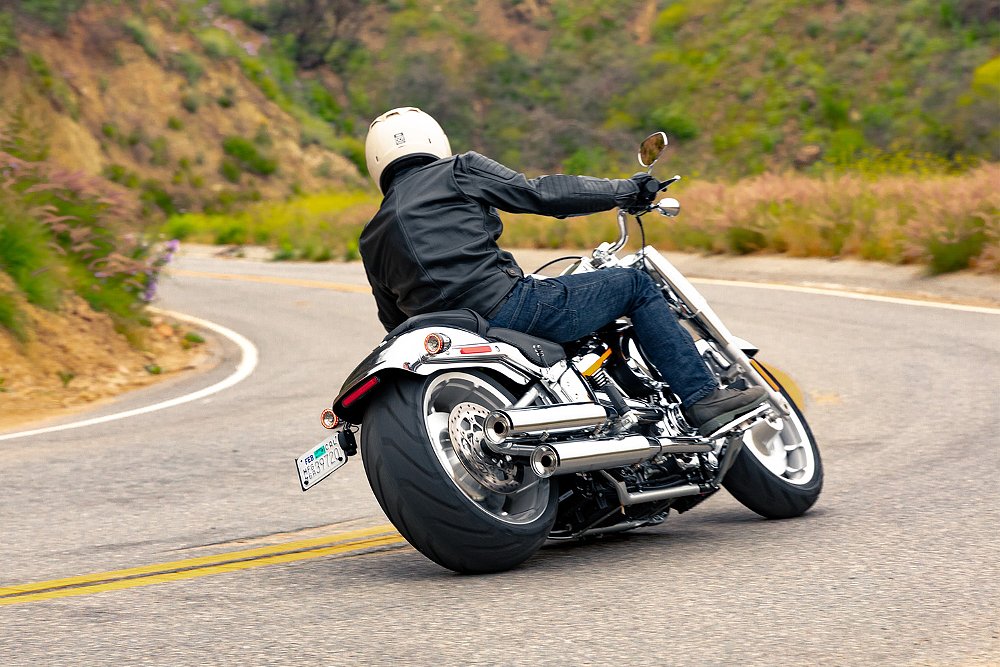
There’s no initiating the turn and setting the line with the Fat Boy. You’re constantly setting the line with countersteering. That’s because the Fat Boy prefers to be upright, not banked over. Introduce throttle, and it stands up. Hit a bump, and it stands up. Running wide of the target isn’t just a possibility, it’s a probability. When it comes to a curvy strip of pavement, the Fat Boy determines the pace, not you. Then again, the Gray Ghost isn’t meant to master twists and turns. It’s meant to turn heads.
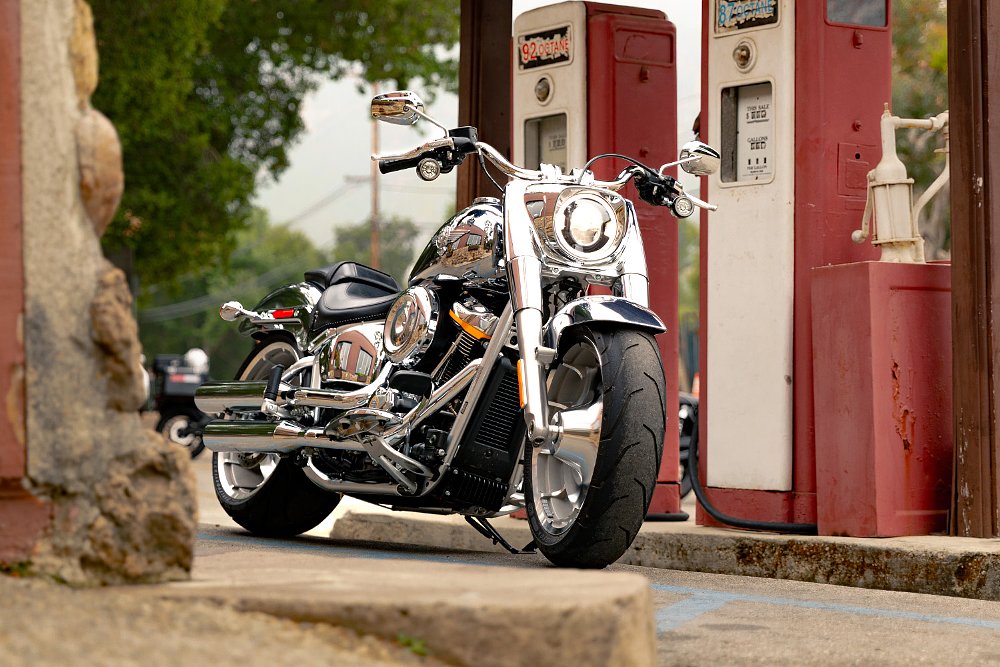
Rolling conversation-starter
If you’re in the market for Gray Ghost, odds are you like to stand out. Some see chrome as a quintessential quality of classic Hogs. If that’s the case, this is the Harley-est Harley to have ever Harley-ed. That doesn’t mean it’s for everyone, though. The Reflective finish can be overkill for some, me included. But its supporters are nothing if not ardent. That was evident from the first time I rolled the Gray Ghost out of my garage.
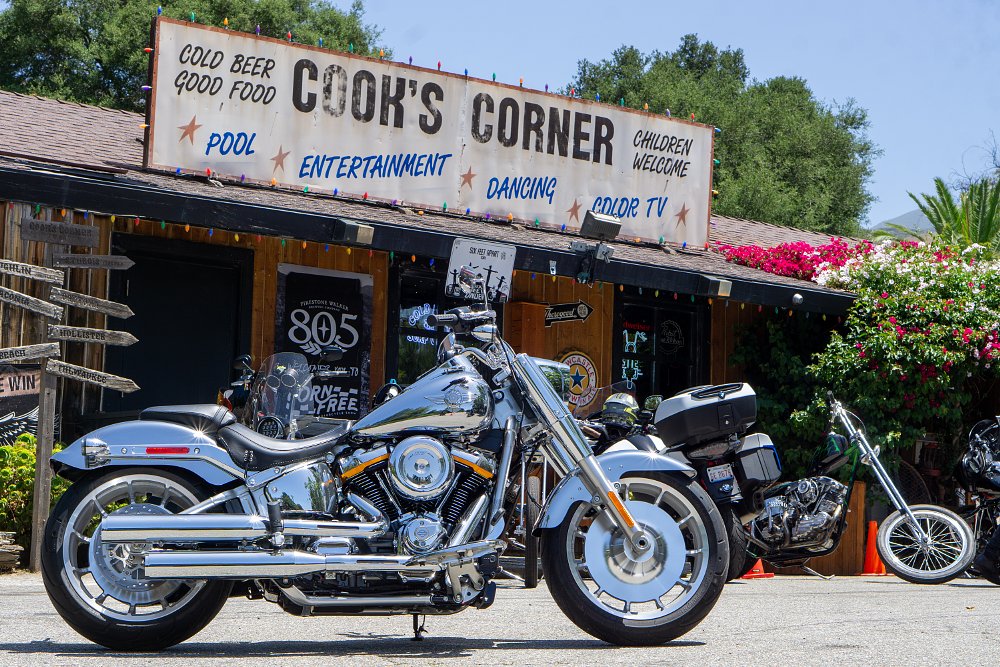
Any time I parked the mirror-finished Softail, I returned to an admirer. There was the Ferrari driver who waxed poetic about “all that chrome.” Or the dog-walking housewife who called it “the most beautiful bike [she’s] ever seen.” There was the Harley loyalist who thought it “looked better in person” or the time a sport bike bro and an ADV rider gathered around, one singing its praises, the other, not so much.
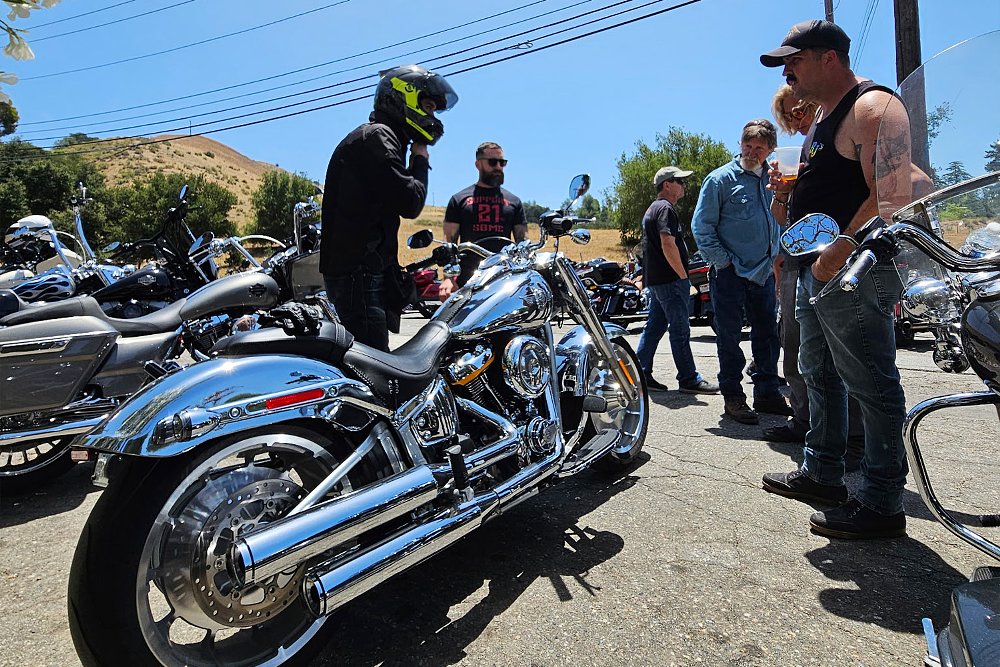
Some loved the Gray Ghost’s look, others merely tolerated it, but everyone in a 10-foot radius reacted to it. They couldn’t help themselves. It’s a quality you won’t find on any spec sheet, but it’s one of the model’s major value props. The Gray Ghost is a statement piece. It’s a rolling conversation-starter. It’s not, however, for the anti-social. If human interaction doesn’t rank high on your list, neither should this Fat Boy. But if connecting with fellow riders and moto-appreciating normies is a pastime of yours, fear not the Gray Ghost.
Giving up the (Gray) Ghost
The Fat Boy was born out of bold design. The reimagined Gray Ghost just pushes that bold design to the Nth degree. It doesn’t bear any mechanical upgrades. Its brakes, suspension, and tech match that of the base Fat Boy. Its Milwaukee-Eight 117 actually produces less horsepower and torque than the standard model’s engine, thanks to a lower-flowing circular air cleaner. The differentiating factor here isn’t performance, it’s the styling. For nearly every Gray Ghost customer, that is the “defining characteristic.” It’s not the disc wheels or the Hydra Glide front end. It’s the Reflective finish. That’s what truly sets this Gray Ghost apart.
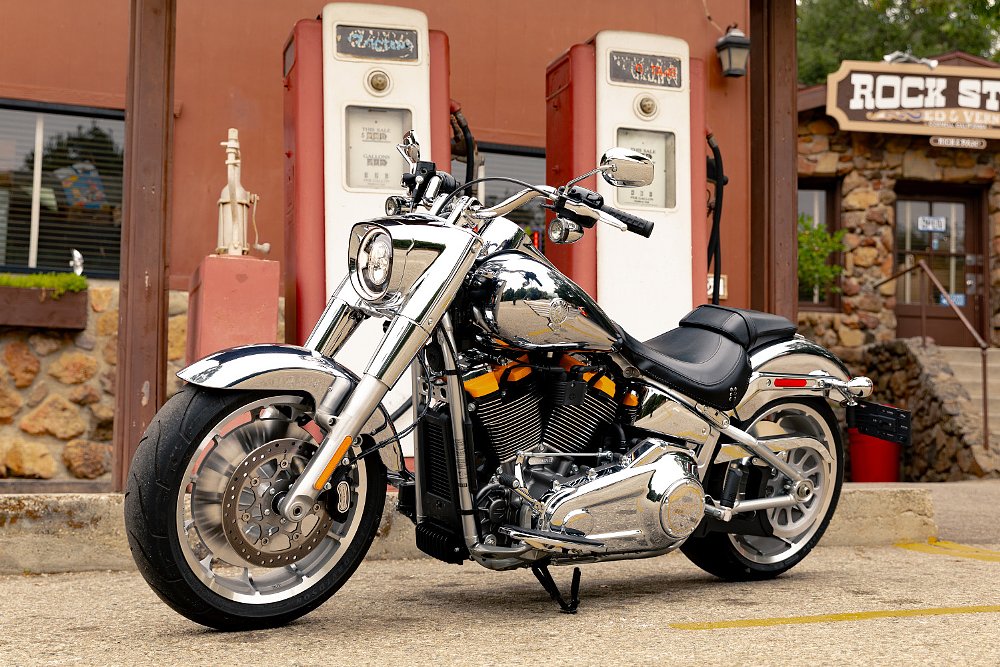
As far as I'm concerned, the "Terminator 2" bike will always overshadow the original Fat Boy. Few Harleys can match its place in pop culture. But the newest Gray Ghost isn’t your grandad’s Gray Ghost. It’s flashy. It’s eye-catching. It’s a conversation piece. It appeals to enthusiasts and laypeople alike. In that way, this Gray Ghost stands on its own. In that way, the latest Icons Collection model has the chance be even more iconic than its predecessor.
| 2025 Harley-Davidson Fat Boy Gray Ghost | |
|---|---|
| Price (MSRP) | $25,399 |
| Engine | 117 ci (1,923 cc), air/oil-cooled, eight-valve, V-twin Milwaukee-Eight 117 Custom |
|
Transmission, final drive |
Six-speed, belt |
| Claimed horsepower | 101 @ 4,800 rpm |
| Claimed torque | 122 foot-pounds @ 3,000 rpm |
| Frame | Tubular steel |
| Front suspension | 49 mm dual-bending valve fork; 5.1 inches of travel |
| Rear suspension | Monoshock adjustable for spring preload; 3.4 inches of travel |
| Front brake | Single four-piston caliper, 300 mm disc with ABS |
| Rear brake | Two-piston caliper, 292 mm disc with ABS |
| Rake, trail | 32.0 degrees, 4.7 inches |
| Wheelbase | 65.0 inches |
| Seat height | 26.6 inches |
| Fuel capacity | 5.0 gallons |
| Tires | Michelin Scorcher 11, 160/60B18 front, 240/40R18 rear |
| Measured weight | 686 pounds |
| Available | Now |
| Warranty | 24 months |
| More info | harley-davidson.com |












